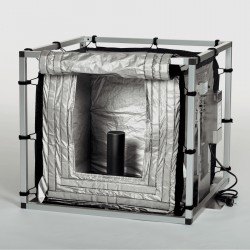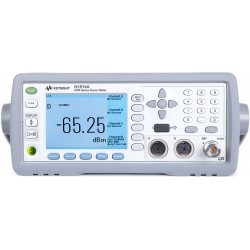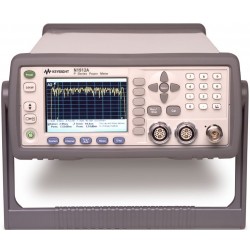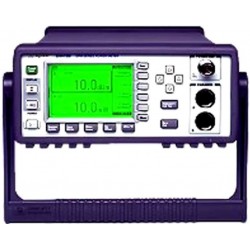No products
Product successfully added to your shopping cart
There are 0 items in your cart. There is 1 item in your cart.
Keysight (Agilent) RF Power Meters
- EMC Test Equipment
- Transient Generators
- RF Power Amplifiers
- DC - 300 kHz RF Amplifiers
- 10 kHz - 250 MHz RF Amplifiers
- 10 kHz - 400 MHz RF Amplifiers
- 10 kHz - 1 GHz RF Amplifiers
- 80 MHz - 1 GHz RF Amplifiers
- 1 GHz - 2 GHz RF Amplifiers
- 700 MHz - 4.2 GHz RF Amplifiers
- 1 GHz - 6 GHz RF Amplifiers
- 2 GHz - 8 GHz RF Amplifiers
- 6 GHz - 18 GHz RF Amplifiers
- 18 GHz - 40 GHz RF Amplifiers
- Pulse Amplifiers
- RF Field Strength Probes & Meters
- RF Conducted Immunity
- EMC Receivers/EMI Analyzers
- EMC Antennas
- Coupling Decoupling Networks (CDN's)
- Line Impedance Stabilization Networks (LISN's)
- RF Test Equipment
- EMC Probes
- EMC Measurement & Equipment Software
- Power Supplies
- Electrical Safety Analyzers
- High Precision Laboratory Power Analyzers & Meters
- Anechoic Chambers
- Over-the-Air (OTA) Test Chambers
- EMI RF Shielded Tent Enclosures
- RF Shielded Rooms
- EMC Absorber
- Positioning Equipment
- EMC/EMI Test Setup
- GTEM Cells / TEM Cells
- Reverberation Chambers
- Used RF Anechoic Chambers
- EMC Chamber Filters
- EMC Chamber Shielding Gaskets
- RF Shielded Doors
- Anechoic Chamber Accessories
- Fully Anechoic (FAR) Test Chambers
- Manufacturers
- 3ctest
- AE Techron
- AH Systems
- Amplifier Research
- Boonton
- Com-Power
- Diamond Engineering
- EM Test (Ametek CTS)
- EMC Partner
- EMC Test Design
- Empower High Power RF Amplifiers
- ETS-lindgren
- Log Periodic Dipole Array Antenna
- Near Field Probe Sets
- Double Ridge Horn Antennas
- Biconical Antennas
- Quad Ridge Horn Antennas
- Electric Field Probes
- GTEM's
- Positioners & Tripods
- Loop Antennas
- Biconilog Antennas
- LISN's (Line Impedance Stabilization Network)
- Shielded Enclosures/Rooms
- Monopole Antennas
- Field Generating Antennas
- Fischer Custom Communications
- Haefely Hipotronics
- Haefely EFT/Burst Immunity Test Systems
- Haefely Surge Combination Wave Test Systems
- Haefely Surge Damped Oscillating Wave Test Systems
- Haefely Electrostatic Discharge Test Systems (ESD)
- Haefely Surge Ring Wave Test Systems
- Haefely Surge Telecom Wave Test Systems
- Haefely Magnetic Field Test Systems
- Haefely CDN's (Coupling/Decoupling Networks)
- IFI Amplifiers
- Keysight (Agilent)
- MVG - Microwave Vision Group
- PMM / Narda
- Rohde & Schwarz RF Test Equipment
- Rohde & Schwarz Broadband RF Amplifiers
- Rohde & Schwarz Spectrum Analyzers
- Rohde & Schwarz Compliant EMI Test Receivers
- Rohde & Schwarz Isotropic RF Probes
- Rohde & Schwarz RF Signal Generators
- Rohde & Schwarz RF Switches
- Rohde & Schwarz Oscilloscopes
- Rohde & Schwarz RF Power Meters
- Rohde & Schwarz RF Power Sensors
- Schloder
- Schwarzbeck Mess-Elektronik
- Schwarzbeck Antennas
- Schwarzbeck Automotive Antennas
- Schwarzbeck Broadband Horn Antennas
- Schwarzbeck Biconical Antennas
- Schwarzbeck Logarithmic Periodic Broadband Antennas
- Schwarzbeck Stacked Log-Periodic Broadband Antennas
- Schwarzbeck Biconic Log-Periodic Antennas
- Schwarzbeck Dipole Antennas
- Schwarzbeck Rod Antennas
- Schwarbeck Antenna Baluns / Holders
- Schwarzbeck LISN Line Impedance Stabilisation Networks
- Schwarbeck Decoupling & Absorbing Clamps
- Schwarzbeck Field Probes
- Schwarzbeck Helmholtz Coils
- Schwarzbeck Antenna Masts
- Schwarzbeck Coupling/Decoupling Networks
- Schwarzbeck Antennas
- Solar Electronics
- Teseq (Schaffner)
- Teseq Automotive Transient Generators
- Teseq RF Test Equipment
- Teseq EFT/Burst Generators
- Teseq RF Immunity Generators
- Teseq ESD Guns
- Teseq Surge Generators
- Teseq Harmonics & Flicker Solutions
- Teseq Dips, Interrupts & Variations Equipment
- Teseq Ring Wave Generators
- Teseq Oscillatory Waves Generators
- Teseq Absorbing Clamps / Ferrite Tube
- Teseq EMC Antennas
- Teseq Current Probes
- Teseq Coupling Networks
- Thermo Keytek
- Vicreate
- Compliance Standards
- International (IEC/EN)
- EN/IEC 61000-3-2
- EN/IEC 61000-3-3
- IEC 61000-3-11
- IEC / EN 610000-3-12
- EN/IEC 61000-4-2
- EN/IEC 61000-4-3
- EN/IEC 61000-4-4
- EN/IEC 61000-4-5
- EN/IEC 61000-4-6
- EN/IEC 61000-4-7
- EN/IEC 61000-4-8
- EN/IEC 61000-4-9
- EN/IEC 61000-4-10
- EN/IEC 61000-4-11
- EN/IEC 61000-4-12
- EN/IEC 61000-4-16
- EN/IEC 61000-4-18
- EN/IEC 61000-4-19
- EN/IEC 61000-4-20
- EN/IEC 61000-4-21
- EN/IEC 61000-4-29
- EN/IEC 61000-4-31
- IEC 61000-4-39
- EN/IEC 62132
- SEMI F47 Voltage Sag Immunity
- Product Standards
- Military & Aerospace Standards
- Automotive EMC Standards
- CISPR Standards
- Telecom Testing
- ANSI/IEEE Standards
- FCC Part 15
- FCC Part 30
- International (IEC/EN)
- Application/Test Type
- Radiated Immunity
- Bulk Current Injection Testing
- RF Emissions Testing
- Conducted Immunity
- Conducted Emissions
- Antenna Pattern Measurement
- CE Mark Testing
- Intentional Radiator Testing
- Pulsed HIRF Radar
- Over-the-Air (OTA) Testing
- 5G Test Solutions
- Automotive EMC
- SAR Measurement Equipment
- Radiated Emissions
- Battery Simulator Test Equipment
- Services
- Clearance
Viewed products
-

Keysight E4419A EPM...
Fast measurement speed (up to 100...
Keysight E4419A EPM Series Dual-Channel RF Power Meter
New
- Fast measurement speed (up to 100 readings per second, over the GPIB, with E-series sensors)
- Speed improvement of x2 using the 8480 series power sensor (compared to 437B)
- No range-switching delays with 8480 series sensors, and only one fast-range switching point with E-series sensors
- High-resolution display with backlighting for a wide viewing angle of displayed data
- Save and recall of up to 10 instrument states
- GPIB connector for remote control of all functions
- Code compatibility with 438A
- Conformity to CE and CSA standards
PDF Downloads
Installation Guide
For Keysight E4418/19A Power Meter Hardware Upgrade Kit (E9300 Compatible)
PDF Downloads (1.52M)Specifications
| Frequency Range | 1 kHz to 999.9 GHz, settable in 1-kHz steps. |
| Dimensions | 212.6 mm W x 88.5 mm H x 348.3 mm D (8.5 in x 3.5 in x 13.7 in) |
| Weight | 4.0 kg (8.8 lb) net, 7.9 kg (17.4 lb) shipping |
Test Equipment Description
EPM Series Dual-Channel Power Meter
The Keysight E4419A is a low-cost, high-performance, dual-channel, programmable power meter. It is fully compatible with the 8480 series of power sensors and the E-series of power sensors (except the E9320A Family). Depending upon which sensor is used, the E4419A can measure from -70 dBm to +44 dBm at frequencies from 100 kHz to 110 GHz. Designed for bench and automatic test equipment use (ATE), the E4419A makes fast (up to 100 readings per second with E-series sensors), accurate and repeatable power measurements. The E4419A is a true dual-channel power meter, which means that you get two simultaneous power readings on the display.
The EPM-442A (E4419A) is a low-cost, high-performance, dual-channel, programmable power meter. It is fully compatible with the HP 8480 series of power sensors and the new ECP series of power sensors. Depending upon which sensor is used, the EPM-442A can measure from -70 dBm to +44dBm at frequencies from 100kHz to 110GHz.
Designed for bench and automatic test equipment use (ATE), the EPM-442A makes fast (up to 100 readings per second with ECP series sensors), accurate and repeatable power measurements. The EPM-442A is a true dual-channel power meter, which means that you get two simultaneous power readings on the display.
The EPM-442A power meter has a high-resolution LCD display with LED backlighting and contrast control. This allows users to see the power readings from a distance, at a wide viewing angle and in a variety of lighting conditions. Users can display both the digital and analog types of readout on the meters split screen facility.The analog peaking meter allows users to make accurate adjustments.
The user interface is easy to learn and use, with hardkeys for the most frequently used functions, and softkey menus to simplify instru ment configuration for different applications. Difference (A-B,B-A) and ratio (A/B, BI/A) functions are provided, and ten instrument configurations can be saved and recalled, reducing the need to repeat set up sequences.
Because the EPM-442A power meter is the same height (88.5mm/3.5 in) and width (212.6mm/8.5 in) as the HP 438A, this makes them easy to substitute into rackmount automatic-test-equipment systems.
Instrumentation absolute accuracy for both the EPM-441A/442A is specified at +/- 0.02 dB in logarithmic mode and +/- 0.5% in linear mode, which makes the EPM family of power meters a negligible part of the overall measurement uncertainty.

Easy to learn ... easy to use
Increase your productivity with an easy-to-learn, easy-to-use power meter.
The EPM series has been designed with the user in mind. Hardkeys such as ZERO/CAL allow access to the most frequently used power meter functions. Softkeys provide measurement control through user selection. The high reso- lution LCD display (with backlighting), large characters, and split screens provide easy viewing of information.
Rear panel features
- DC recorder output, 0 to 1 Volt. The Agilent E4419B has two DC recorder outputs.
- E441xB-002 provides rear panel sensor inputs with the power refer- ence oscillator on the front panel.
- E441xB-003 provides parallel rear panel sensor inputs and moves the power reference oscillator to the rear panel.
- GPIB connector for remote control of all functions.
- RS232/422 connector for remote control.
- Line power - universal input voltage range with NO range selection switches.
- Ground connector - for those applications where you need a hard-wired connection between the power meter’s ground and a common ground.
- Power meter conforms to CE and CSA standards.
- Remote input / output - TTL logic level is output when a measurement exceeds a predetermined limit. TTL inputs are provided to initiate zero and calibration cycles.
Designed for installation and maintenance
Wide dynamic range allows high and low power measurements with a single sensor
One E-series CW sensor covers the range -70 to +20 dBm, while the E9300 sensors operate from -60 to +44 dBm (25W), depending on the sensor. This wide dynamic range capability saves you time and money as you can measure both high (transmitter monitor points) and low (receiver) power levels using a single sensor. Often using just one sensor reduces the requirement for multiple sensor reconnections and the associated mandatory zero and calibration procedures.
Stored sensor calibration factors for best accuracy and ease of use
Now you no longer have to key in the sensor calibration factors to achieve optimum meas- urement accuracy. The E-series sensor calibra- tion factors (computed at our factory or Agilent Technologies Service Center) are pro- grammed into measurement points across the frequency range of the sensor and stored in EEPROM.
At power-on, or when the sensor is connected, the calibration factors are automatically downloaded into the EPM series power meter. This eliminates measurement errors caused by wrongly keyed-in calibration factor data.
Not all installation and maintenance environ- ments are temperature controlled. Therefore, it is important to have confidence in your power measurements over a wide temperature range. E-series sensors provide temperature correction information. This ensures that the best power measurement accuracy is maintained over the full 0 to 55˚C temperature range.
Rugged and portable makes it ideal for field use
The optional rechargeable battery (option 001), which provides up to 5.5 hours of continuous opera- tion, means you can use the EPM series power meters in a mains-free environment. The battery charges in less than three hours, during which time the meter can be used, and the charge level indicators keep you informed of the battery sta- tus at all times. The soft carry / operating case (34141A) makes it easy to use the EPM series power meter in installation and maintenance environments. Front and rear-panel bumpers protect the power meter from everyday knocks. A bail handle makes it easy to carry. The EPM series power meters are lightweight—weighing approximately 4kg (9 lb).
Versatile display is suitable for your measurement needs
In the installation and maintenance environment, it is important to be able to see the power meter’s display from a distance and in a variety of lighting conditions. The EPM series power meter has been designed to meet this need. Contrast adjustment lets you set the brightness of the display.
With the internal battery Option E441xB-001 3 installed, the LED backlight can be switched off to conserve battery charge levels. The back- light “timed” mode switches the backlight off after 10 minutes of inactivity, again, to maxi- mize battery operation.
The display’s wide viewing angle lets you read the large characters and digits, or the analog peaking meter, from a distance. You can dis- play both the digital and analog types of read- out using the meter’s split screen facility.
The analog peaking meter helps you make accurate adjustments. User-defined upper and lower scale limits, either in dBm or Watts, allow you to control the sensitivity of the displayed adjustment.
The E-series and 8480 series sensors can oper- ate with long sensor cables. Cable lengths up to 61 meters (200 feet) can be used in conjunc- tion with the 8480 series sensors. So, when you are inside a radio station or up a radio mast, those awkward transmitter and receiver adjust- ments are made easy using long sensor cables.
3 Available for an extra cost.
 |  |
|
The battery option and operating | In subdued lighting conditions, | In this setup, the top half of the split |
Designed for R&D
Optimum measurement accuracy and repeatability means confidence in your power measurements
The EPM series power meters maintain the high accu- racy standard set by the Agilent 437B and 438A— being designed to have excellent linearity. Instrumentation absolute accuracy, due to the meter electronics, is specified to be +0.02 dB in logarithmic mode and +0.5% in linear mode—mak- ing this source of error a negligible part of the overall measurement uncertainty.
In RF and microwave power measurements, the largest errors are caused by:
- Sensor and source mismatch, and
- Sensor frequency response, non-linearity, and temperature characteristics.
To minimize the mismatch error, the E-series sensors have a low VSWR specification. To provide comprehensive error correction, the calibration factors, linearity and temperature error correction information are stored in EEPROM. Error correction is performed with- in the power meter. Frequency data is entered by the user. Taking account of the signal level, the frequency being measured, and the tem- perature, appropriate correction values are applied to the measurement. This error correc- tion process ensures optimum measurement accuracy and repeatability over the full 0 to 55˚C temperature range.
User friendly interface for quick setup times
The power meter has an intuitive user interface. Hardkeys for the most frequently used functions and softkey menus simplify configuring the power meter for your particular measurement needs. To reduce repeated setup sequences, the SAVE/RECALL menu allows you to save up to 10 instrument configurations.
More choice means the correct sensor for your application The EPM series power meter’s compatibility with both the 8480 series and E-series sensors provides R&D engineers with more choice:
- The EPM series power meter and 8480 series sensor com- bination form a high precision, average power measure- ment system operating in the frequency range 100 kHz to 110 GHz (depending on the selected sensor) over a 50 dB maximum dynamic range.
- The EPM series power meter and E-series sensor com- bination is ideal for measuring signals in the frequency range 9 kHz to 26.5 GHz, over a wide dynamic range, from -70 dBm to +44 dBm, (depending on the selected sensor).










